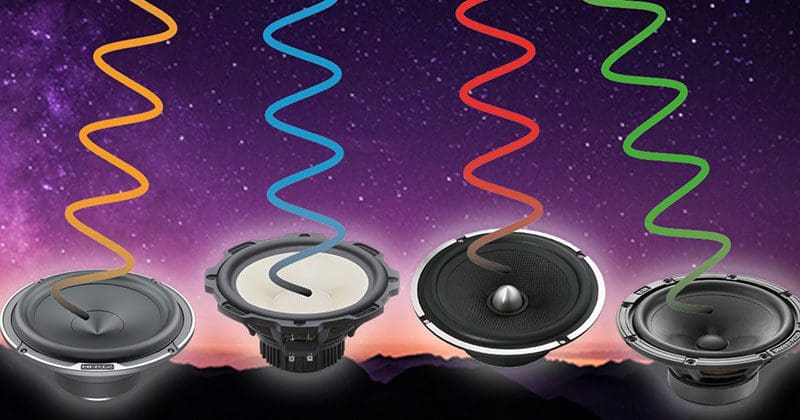When it comes to high-end car audio systems, you may hear your system designer or installation technician talk about phase. A discussion of phase is a pretty high-level concept and not something that most consumers concern themselves with. However, it’s an important topic and getting it right requires proper system design and calibration to ensure that your music sounds its best. Slide in your pocket protector and don your lab coat — things are about to get nerdy!
What Is Phase?
Phase, or more accurately, relative phase, describes the relationship between two alternating current signals. In a car audio system, we might be referring to the difference in the sound arrival time between a left and right speaker, the output of a subwoofer and a mid-woofer, or the output of a crossover relative to the original signal. Understanding all these relationships is crucial to recreating an accurate listening experience.
There are a few terms we’ll define before we go further. When two signals of the same frequency rise and fall simultaneously, we describe those signals as being in phase. When one signal is ahead or behind the other, those signals are leading or lagging the other.
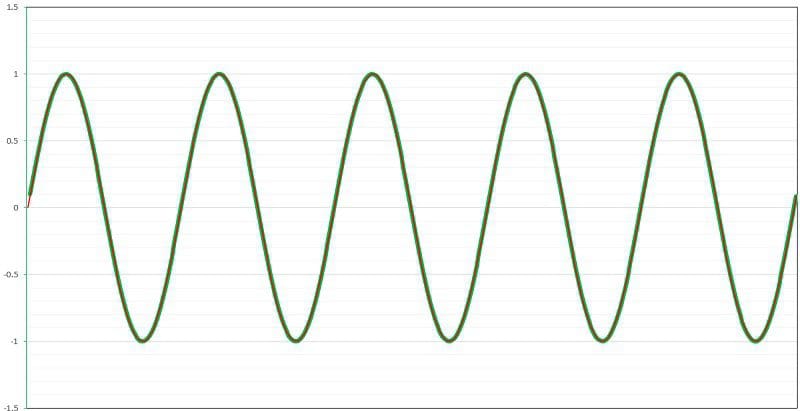
As we mentioned, phase is the relationship between two signals. We can describe the relationship in terms of a phase angle or by time. Phase angle looks at one cycle of a single frequency and divides it into 360 degrees – just like a circle.
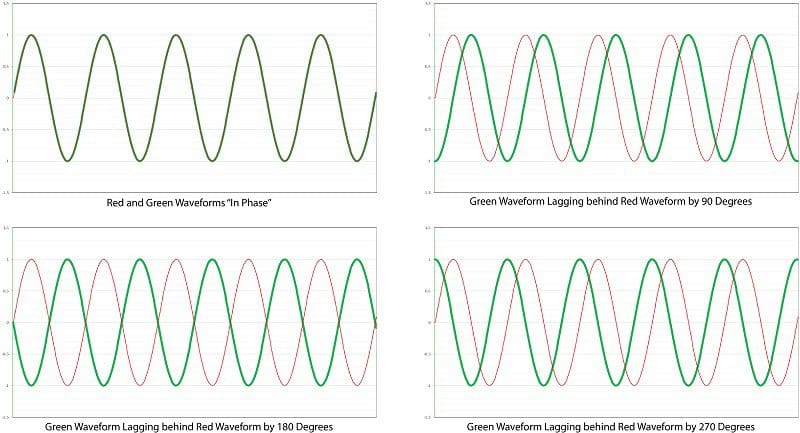
Phase can also be described by time, usually in milliseconds. There is no direct relationship between phase angle and delay time as the frequency of the waveform being analyzed matters. A low-frequency 40-hertz waveform takes 20 milliseconds to go through a single cycle. A 1 kHz waveform has a cycle period of 1 millisecond. We can’t describe the phase relationship between these sounds as they have dramatically different periods.
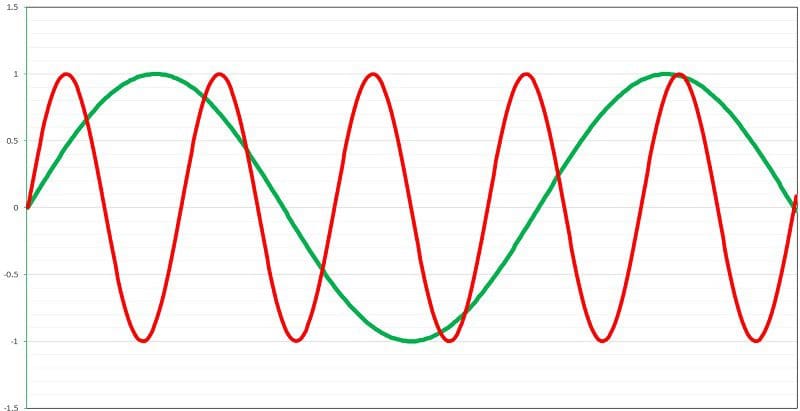
Phase and Polarity
An error commonly seen on car audio amplifiers is the inclusion of a switch labeled as phase. This switch doesn’t change the output waveform phase; it inverts the polarity of the signal. The start and stop times remain the same.
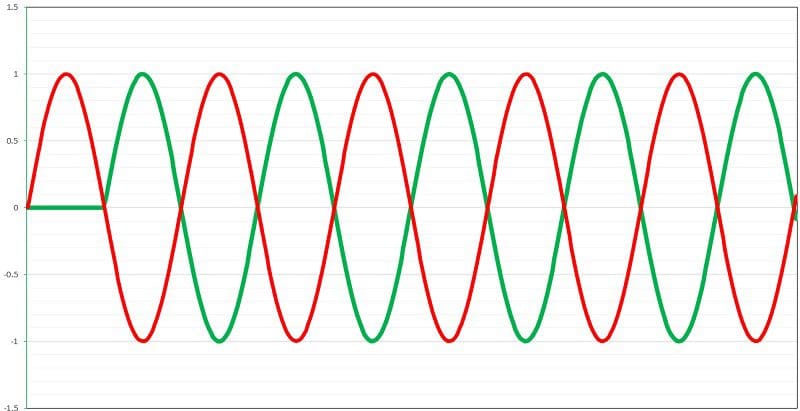
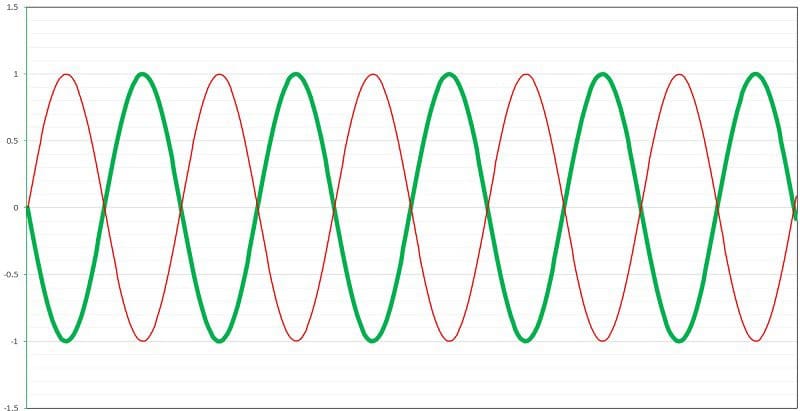
Why Phase Matters
Imaging refers to the perceived placement of instruments throughout a soundstage. Because the driver sits much closer to the speakers on the left side of the vehicle, they will hear them before those on the right — this difference in phase results in the soundstage being compressed toward the left side of the vehicle.
Given that the difference in pathlengths from a speaker mounted in the lower part of a door on the left as compared to the right is about 30 inches, the difference in arrival time is about 2.41 milliseconds.
A properly calibrated digital signal processor can compensate for these differences and help create a very realistic listening experience.
Our delay between channels causes more than just a shift in our music’s perceived source, it also alters the frequency response of what we hear. When the left and right speakers produce the same sounds, they don’t add evenly when the right signal lags behind the left. This time difference results in what’s known as comb filtering. The perceived response is full of big dips that can’t be equalized out of the system. Many factory-installed audio systems are calibrated using what’s called an all-pass filter to compensate for this phenomenon. Suppose you want your audio system to sound great from both seats. In that case, you’ll need a digital signal processor that can apply all-pass filters and a technician who understands the calibration process.
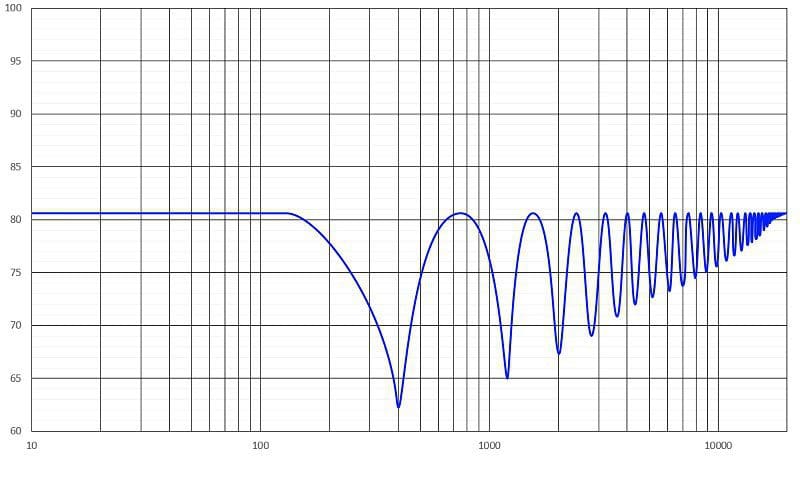
Another place where phase becomes an issue is at crossover points. For the most part, crossovers impose a phase shift that’s directly correlated to their attenuation rate. So, as -6 dB/octave filter has a shift of 45 degrees at the knee frequency, a -12 dB filter imposes a 90-degree shift and a -24 dB filter is 180 degrees.
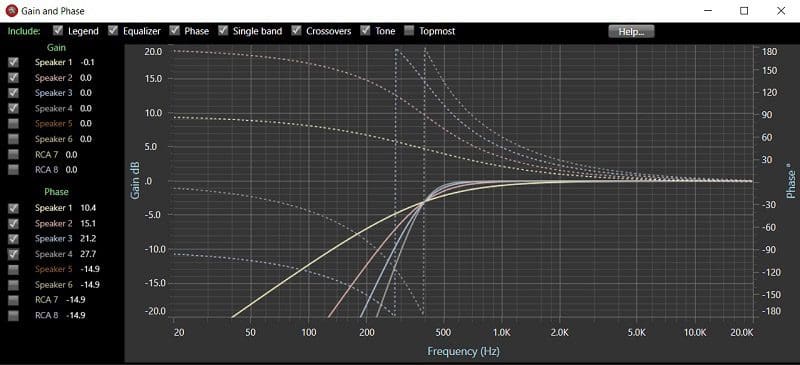
This matters because we typically apply similar filters to the speaker operating in the adjacent frequency range. So, a woofer with a -12 dB octave filter at 400 Hz will be accompanied by a midrange playing down to the same 400 Hz. The phase shifts are the same in amplitude but opposite in direction. With proper calibration, you end up with the signals being 180 degrees out of phase at the crossover point, and their output cancels each other.
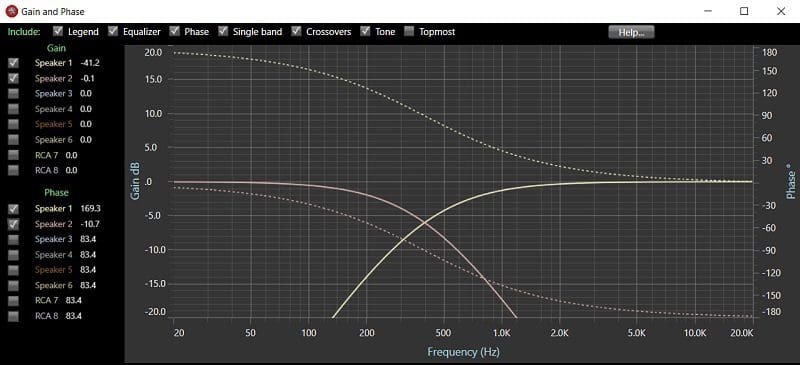
Get the Phase Right with Proper System Design and Calibration
Suppose you’re having the audio system in your car or truck upgraded. In that case, the shop you’re dealing with may need to know how to work with a factory-installed stereo that includes all-pass filters and will require a thorough understanding of phase to configure signal delay and crossovers in an amplifier or digital signal processor. This stuff takes time to learn and even longer to practice to make your music sound genuinely realistic. Knowing and implementing this information is what separates the great car audio shops from the vehicle accessory retailers.
